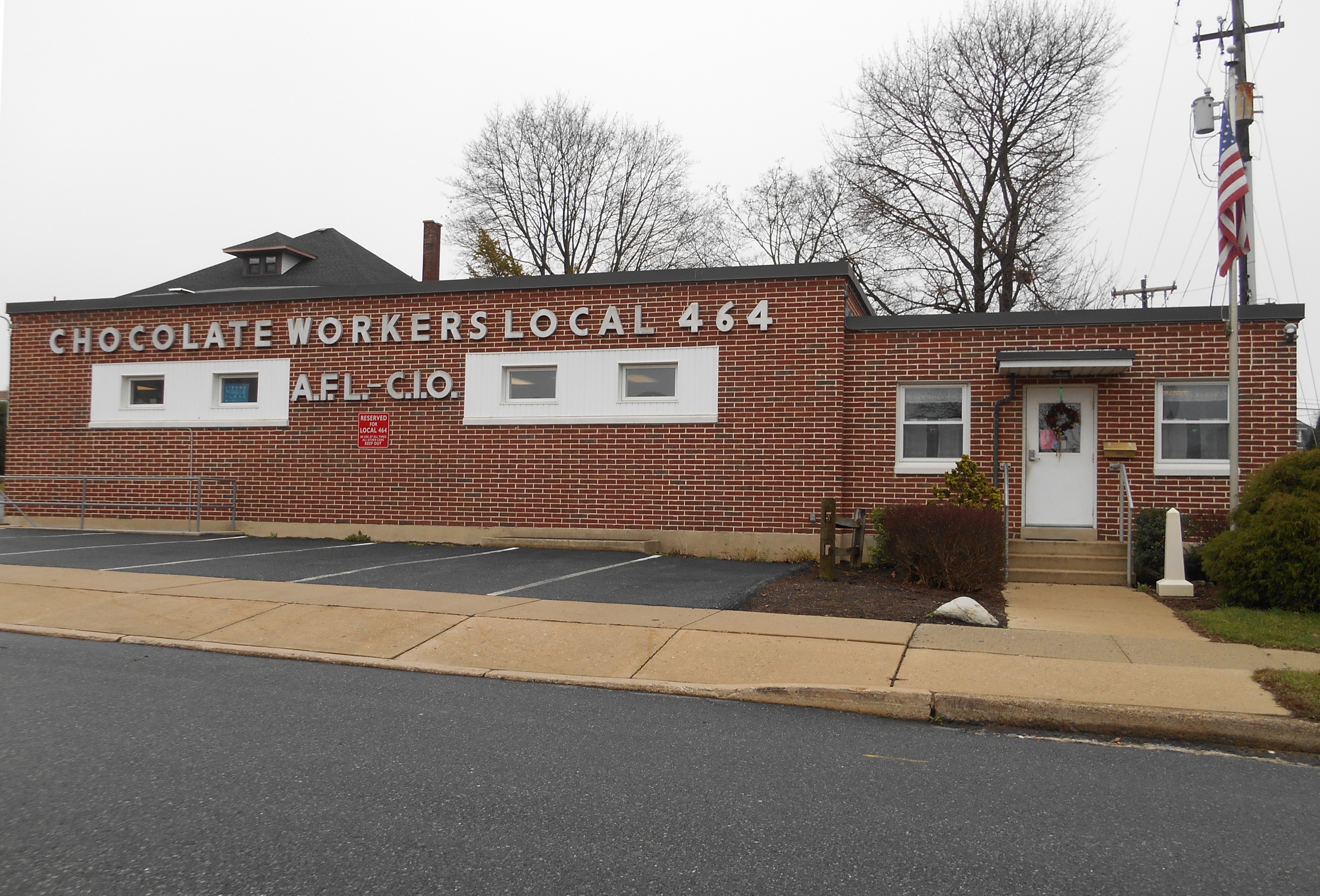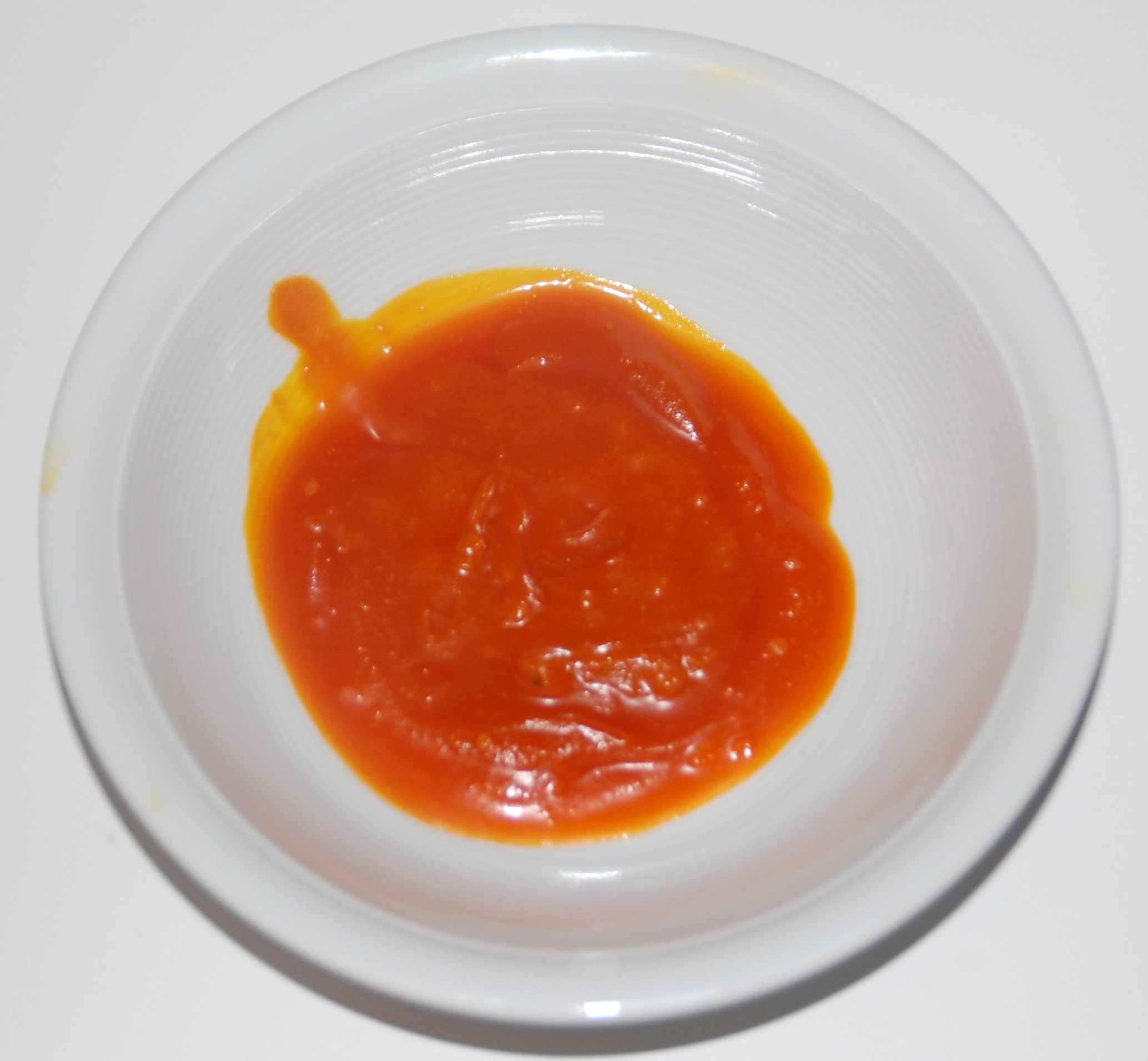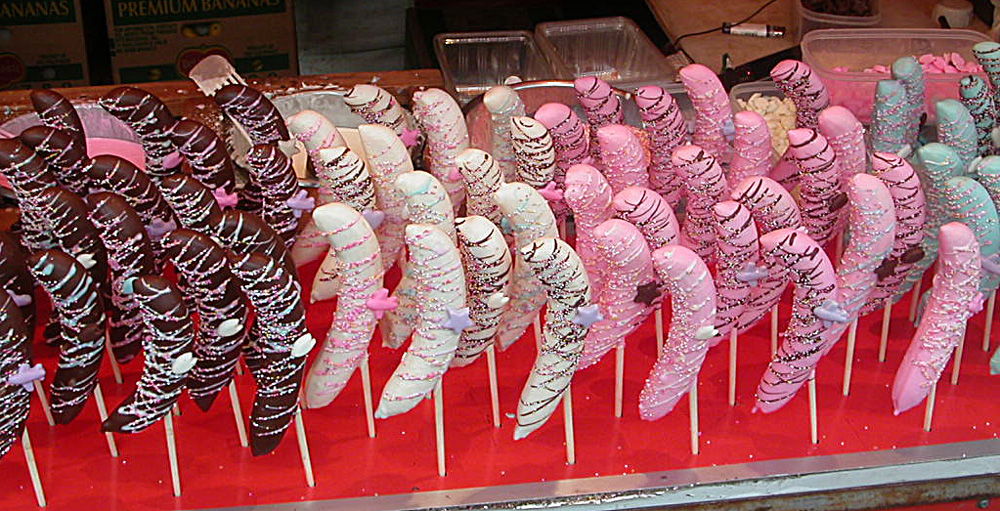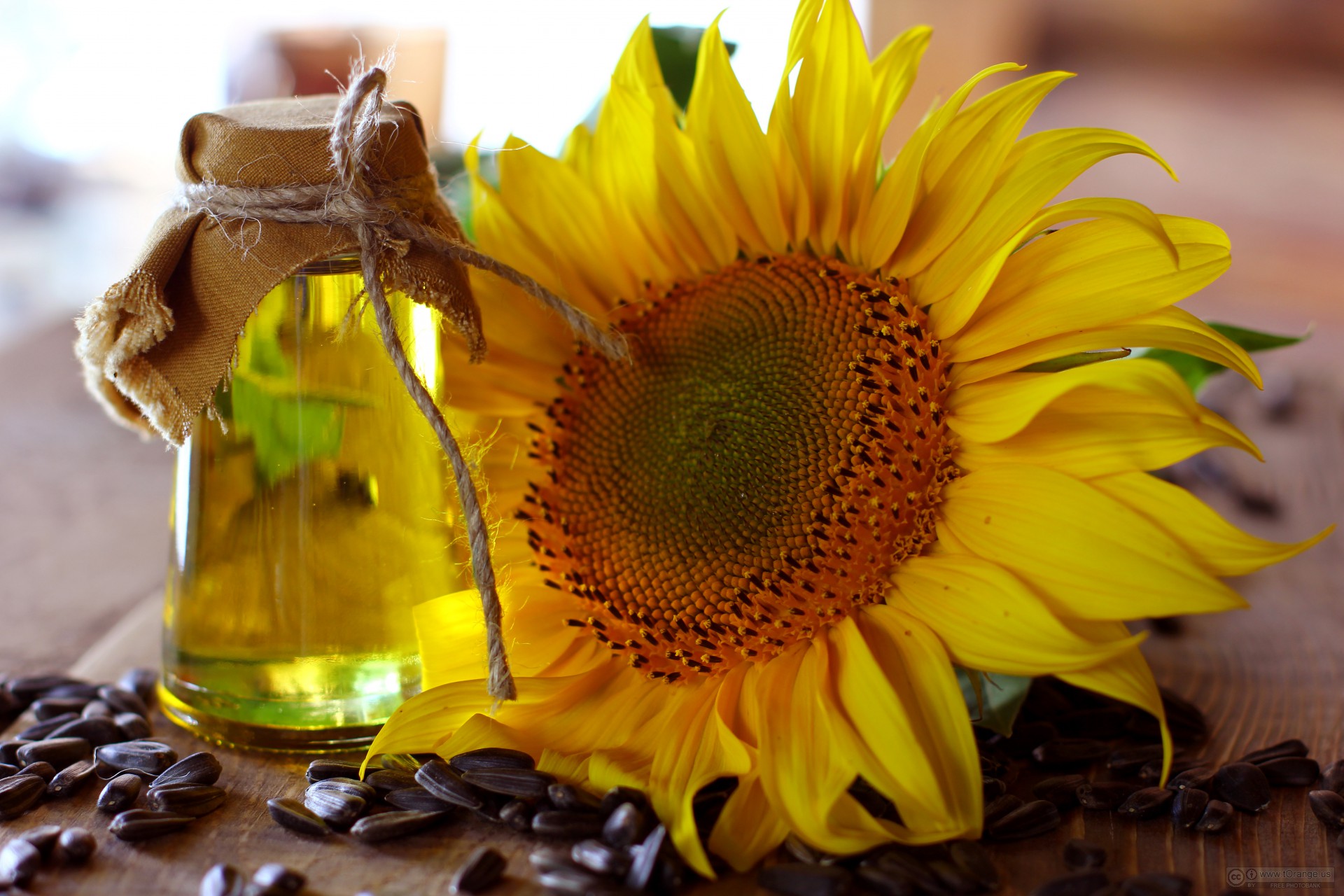|
Milk Duds
Milk Duds are a brand of candies made with chocolate, created in 1928 by Hoffman and Company of Chicago and now produced and marketed by The Hershey Company, under license from owners of the brand, Highlander Partners, a Dallas-based global private equity firm. The candy, sold in a golden-yellow theatre-style box, is an irregularly shaped caramel disk with a confectionery chocolate coating of cocoa solids, cocoa and vegetable oil. At its original naming, according to Hershey, "milk" referred to the product's initial milk ingredient, and "dud" referred to failed attempts to create a spherical shape. History In 1928, Hoffman and Company of Chicago tried to manufacture a spherical, chocolate-covered caramel candy. Because they were unsuccessful in achieving the spherical shape, the candies were called "wikt:dud, duds". This inspired the candy's name, "Milk Duds". In the same year, Holloway took over Hoffman and Company and the production of Milk Duds. In 1960 Holloway sold ... [...More Info...] [...Related Items...] OR: [Wikipedia] [Google] [Baidu] |
The Hershey Company
The Hershey Company, often called just Hershey or Hershey's, is an American multinational corporation, multinational confectionery company headquartered in Hershey, Pennsylvania, which is also home to Hersheypark and Hershey's Chocolate World. The Hershey Company is one of the largest chocolate manufacturers in the world; it also manufactures baked products, such as cookies and cakes, and sells beverages like milkshakes, as well as other products (through mergers and acquisitions). The Hershey Company was founded by Milton S. Hershey in 1894 as the Hershey Chocolate Company, originally established as a subsidiary of his Lancaster Caramel Company. The Hershey Trust Company owns a minority stake but retains a majority of the voting power within the company. Hershey's chocolate is available in 60 countries. It has three large distribution centers with modern labor management systems. In addition, Hershey is a member of the World Cocoa Foundation. It is also associated with the Hersh ... [...More Info...] [...Related Items...] OR: [Wikipedia] [Google] [Baidu] |
Palm Oil
Palm oil is an edible vegetable oil derived from the mesocarp (reddish pulp) of the fruit of oil palms. The oil is used in food manufacturing, in beauty products, and as biofuel. Palm oil accounted for about 36% of global oils produced from oil crops in 2014. Palm oils are easier to stabilize and maintain quality of flavor and consistency in ultra-processed foods, so they are frequently favored by food manufacturers. Globally, humans consumed an average of of palm oil per person in 2015. Demand has also increased for other uses, such as cosmetics and biofuels, encouraging the growth of palm oil plantations in tropical countries. The mass production of palm oil in the tropics has attracted the concern of environmental and human rights groups. The palm oil industry is a significant contributor to deforestation in the tropics where palms are grown and has been cited as a factor in social problems due to allegations of human rights violations among growers. In 2018, a repor ... [...More Info...] [...Related Items...] OR: [Wikipedia] [Google] [Baidu] |
Brand Name Confectionery
A brand is a name, term, design, symbol or any other feature that distinguishes one seller's goods or service from those of other sellers. Brands are used in business, marketing, and advertising for recognition and, importantly, to create and store value as brand equity for the object identified, to the benefit of the brand's customers, its owners and shareholders. Brand names are sometimes distinguished from Generic brand, generic or store brands. The practice of branding—in the original literal sense of marking by burning—is thought to have begun with the ancient Egyptians, who are known to have engaged in livestock branding and branded slaves as early as 2,700 BCE. Branding was used to differentiate one person's cattle from another's by means of a distinctive symbol burned into the animal's skin with a hot branding iron. If a person stole any of the cattle, anyone else who saw the symbol could deduce the actual owner. The term has been extended to mean a strategic person ... [...More Info...] [...Related Items...] OR: [Wikipedia] [Google] [Baidu] |
List Of Chocolate-covered Foods
This is a list of chocolate-covered foods. Chocolate is a typically sweet, food preparation of ''Theobroma cacao'' seeds, roasted and ground, often flavored, as with vanilla. It is made in the form of a liquid, paste or in a block or used as a flavoring ingredient in other sweet foods. Chocolate-covered foods * Caramel apple – although traditionally covered in just caramel or caramel and nuts, chocolate is often added, sometimes in decorative patterns. * Chocolate biscuit – many types of biscuits (notably cookies, shortbreads, digestive biscuits, wafers) are often covered in chocolate * Chocolate bar – many varieties have a chocolate coating * Chocolate-coated marshmallow treats (including Peeps) – produced in different variations around the world, with several countries claiming to have invented it or hailing it as their "national confection". The first chocolate-coated marshmallow treat was created in the early 1800s in Denmark. * Chocolate-coated peanut – pea ... [...More Info...] [...Related Items...] OR: [Wikipedia] [Google] [Baidu] |
Vanillin
Vanillin is an organic compound with the molecular formula . It is a phenolic aldehyde. Its functional groups include aldehyde, hydroxyl, and ether. It is the primary component of the ethanolic extract of the vanilla bean. Synthetic vanillin is now used more often than natural vanilla extract as a flavoring in foods, beverages, and pharmaceuticals. Vanillin and ethylvanillin are used by the food industry; ethylvanillin is more expensive, but has a stronger note. It differs from vanillin by having an ethoxy group (−O−CH2CH3) instead of a methoxy group (−O−CH3). Natural vanilla extract is a mixture of several hundred different compounds in addition to vanillin. Artificial vanilla flavoring is often a solution of pure vanillin, usually of synthetic origin. Because of the scarcity and expense of natural vanilla extract, synthetic preparation of its predominant component has long been of interest. The first commercial synthesis of vanillin began with the more readily ... [...More Info...] [...Related Items...] OR: [Wikipedia] [Google] [Baidu] |
Lecithin
Lecithin ( ; from the Ancient Greek "yolk") is a generic term to designate any group of yellow-brownish fatty substances occurring in animal and plant tissues which are amphiphilic – they attract both water and fatty substances (and so are both hydrophilic and lipophilic), and are used for smoothing food textures, emulsifying, homogenizing liquid mixtures, and repelling sticking materials. Lecithins are mixtures of glycerophospholipids including phosphatidylcholine, phosphatidylethanolamine, phosphatidylinositol, phosphatidylserine, and phosphatidic acid. Lecithin was first isolated in 1845 by the French chemist and pharmacist Théodore Gobley. In 1850, he named the phosphatidylcholine . Gobley originally isolated lecithin from egg yolk and established the complete chemical formula of phosphatidylcholine in 1874; in between, he demonstrated the presence of lecithin in a variety of biological materials, including venous blood, human lungs, bile, roe, and brains of ... [...More Info...] [...Related Items...] OR: [Wikipedia] [Google] [Baidu] |
Baking Soda
Sodium bicarbonate (IUPAC name: sodium hydrogencarbonate), commonly known as baking soda or bicarbonate of soda (or simply “bicarb” especially in the UK) is a chemical compound with the formula NaHCO3. It is a salt (chemistry), salt composed of a sodium cation (Sodium, Na+) and a bicarbonate anion (). Sodium bicarbonate is a white solid that is crystalline but often appears as a fine powder. It has a slightly salty, alkaline taste resembling that of washing soda (sodium carbonate). The natural mineral form is nahcolite, although it is more commonly found as a component of the mineral trona. As it has long been known and widely used, the salt has many different names such as baking soda, bread soda, cooking soda, brewing soda and bicarbonate of soda and can often be found near baking powder in stores. The term ''baking soda'' is more common in the United States, while ''bicarbonate of soda'' is more common in Australia, the United Kingdom, and New Zealand. Abbreviated colloqu ... [...More Info...] [...Related Items...] OR: [Wikipedia] [Google] [Baidu] |
Brown Sugar
Brown sugar is a sucrose sugar product with a distinctive brown color due to the presence of molasses. It is either an unrefined or partially refined soft sugar consisting of sugar crystals with some residual molasses content or produced by the addition of molasses to refined white sugar. Brown sugar is 98% carbohydrates as mainly sucrose, contains no micronutrients in significant amounts, and is not healthier than white sugar. Characteristics The ''Codex Alimentarius'' requires brown sugar to contain at least 88% sucrose plus Inverted sugar syrup, invert sugar. Commercial brown sugar contains from 3.5% molasses (''light brown sugar'') to 6.5% molasses (''dark brown sugar'') based on its total volume. Based on total weight, ''regular commercial brown sugar'' contains up to 10% molasses. Brown sugars are graded numerically according to how dark they are, with higher numbers correlating with darker sugars. The most common gradings are 6, 8, 10 and 13. The product is naturally ... [...More Info...] [...Related Items...] OR: [Wikipedia] [Google] [Baidu] |
Palm Kernel Oil
Palm kernel oil is an edible plant oil derived from the kernel of the oil palm tree ''Elaeis guineensis''. It is related to two other edible oils: ''palm oil'', extracted from the fruit pulp of the oil palm, and ''coconut oil'', extracted from the kernel of the coconut. Palm kernel oil, palm oil, and coconut oil are three of the few highly saturated vegetable fats; these oils give the name to the 16-carbon saturated fatty acid palmitic acid that they contain. Palm kernel oil, which is semi-solid at room temperature, is more saturated than palm oil and comparable to coconut oil. History Oil from the African oil palm ''Elaeis guineensis'' has long been recognized in West African and Central African countries. European merchants trading with West Africa occasionally purchased palm oil for use in Europe, but palm kernel oil remained rare outside West Africa. The USDA has published historical production figures for palm kernel oil for years beginning October 1 and endin ... [...More Info...] [...Related Items...] OR: [Wikipedia] [Google] [Baidu] |
Sunflower Oil
Sunflower oil is the non-volatile oil pressed from the seeds of the sunflower (''Helianthus annuus''). Sunflower oil is commonly used in food as a frying oil, and in cosmetic formulations as an emollient. Sunflower oil is primarily composed of linoleic acid, a polyunsaturated fat, and oleic acid, a monounsaturated fat. Through selective breeding and manufacturing processes, oils of differing proportions of the fatty acids are produced. The expressed oil has a neutral taste profile. The oil contains a large amount of vitamin E. Composition Sunflower oil is mainly a triglyceride. The British Pharmacopoeia lists the following profile: *Palmitic acid (saturated): 5% *Stearic acid (saturated): 6% *Oleic acid (monounsaturated omega-9): 30% * Linoleic acid (polyunsaturated omega-6): 59% Four types of sunflower oils with differing concentrations of fatty acids are produced through plant breeding and industrial processing: high-linoleic (conventional), high-oleic, mid- ... [...More Info...] [...Related Items...] OR: [Wikipedia] [Google] [Baidu] |







